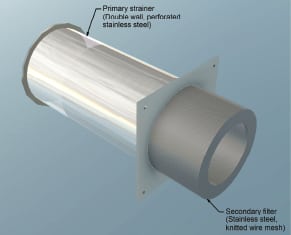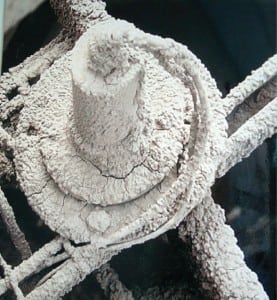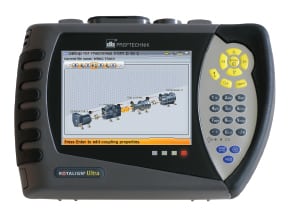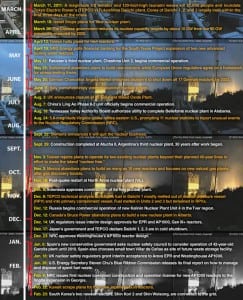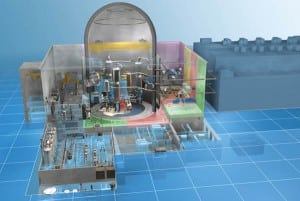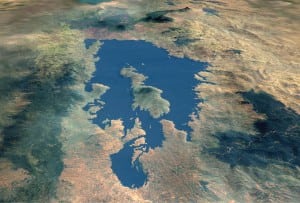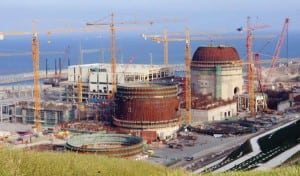Departments
-
News
Abundance of Minerals
What do iPads, flat screen TVs, Chevrolet’s plug-in Volt, and Raytheon’s Tomahawk cruise missiles have in common? Each uses one or more of the 17 rare earth elements in their manufacture, and over 95% of those elements come from China.
-
News
Patented Filter Medium for Core Cooling
Multi-disciplined engineering and consulting firm ENERCON received patents for a filter medium for strainers used in nuclear reactor emergency core cooling systems (ECCS). ENERCON’s Debris Bypass Eliminator was developed in response to the Nuclear Regulatory Commission’s Generic Safety Issue, GSI-191, “Assessment of Debris Accumulation on PWR Sump Performance.” During long-term recirculation for cooling of the […]
-
Legal & Regulatory
Suing for (Pipeline) Safety
As a Valentine’s Day present to federal regulators, San Francisco City Attorney Dennis Herrera took the unusual step of suing the U.S. Pipeline and Hazardous Materials Safety Administration (PHMSA). The complaint alleges that the PHMSA has “abjectly failed to oversee the [California Public Utilities Commission’s (CPUC’s)] pipeline safety program or to ensure that federal pipeline safety standards are enforced.” The complaint chastises the PHMSA for “shirking that duty for over a decade, if not longer.”
-
O&M
Preventing Downtime by Picking the Best Switch Technology
Common fuel-handling problems in the power industry often result in production downtime, costing the owner perhaps up to $200,000 per hour. There are many areas within a coal-fired power plant where mishaps can cause stoppage of material flow. Here we discuss how to select the best switch technology to reduce the possibility of coal flow stoppages.
-
News
True Machine Train Alignment
Ascertaining the alignment of all machines in a multiple machine train has always been a cumbersome and time-consuming process. The new ROTALIGN ULTRA MultiCoupling feature allows the alignment of up to seven machines in a train to be measured simultaneously, with a single quarter rotation (or less) of the shafts. This saves time and resources […]
-
Nuclear
THE BIG PICTURE: Nuclear Aftershocks
In the year following the Fukushima accident in Japan, the nuclear sector has seen several setbacks (text in orange) as well as major milestones (white).
-
Commentary
Natural Gas: Secure Supply for Today and the Future
Ten years ago, I could not have written this column. The natural gas industry was different—limited domestic supply resulted in unstable prices. However, recent advancements in drilling technology have enabled the industry to discover, access, and produce abundant sources of natural gas in America. Because the industry has changed, the country’s energy future is now […]
-
Nuclear
Less-Familiar Generation III+ Reactors Make Inroads
Following key regulatory approvals in the UK and U.S. of Westinghouse’s AP1000 and AREVA’s EPR Generation III+ reactor designs, France’s nuclear safety authority in February determined that the little-known ATMEA 1 reactor design met international safety criteria for Generation III+ reactors. The reactor is a 1,100-MW pressurized water reactor (PWR) developed and marketed by ATMEA, a 2007-created joint venture between France’s AREVA and Japan’s Mitsubishi Heavy Industries (MHI).
-
Gas
An “Exploding Lake” Becomes a Power Source
Rwanda’s Lake Kivu has a nickname: “Killer Lake.” The shimmering 1,040–square mile body of freshwater on the western branch of the Great East African Rift that straddles the Democratic Republic of Congo and Rwanda has had a bloody history. Not only was it the site of atrocity during the 1994 Rwandan genocide, but scientists say that it is also one of three known “exploding lakes.”
-
Nuclear
New South Korean and Russian Reactors Go Online
Three nuclear reactors under construction in the Eastern Hemisphere reached major milestones over the past few months. South Korea’s Korea Hydro and Nuclear Power Co. connected its 960-MW Shin-Wolsong 1 reactor near Nae-ri to the grid on Jan. 27 and, a day later, its sister plant, the 960-MW Shin Kori 2 (Figure 5) in the southwest city of Gori. Both units are expected to become commercially operational this summer. And last December, Russia began commercial operation of its 950-MW Kalinin 4 plant, a V-320 model VVER 1000.

